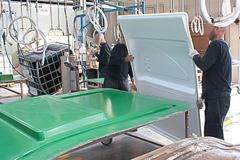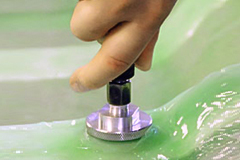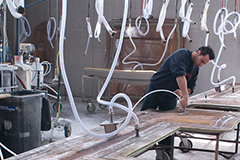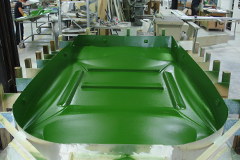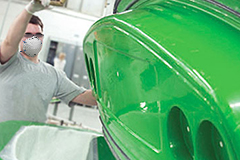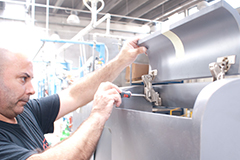Home > Company Profile
INTEGRA is an Italian company , with thirty years experience in the production of coatings and components used in the construction , reconditioning, aesthetic and components changes for ambulances and commercial vehicles , made of composite material and fibre reinforced resin . The production is developed with innovative moulding techniques that provide a valid product with a very high standard of finishing . Integra offers first class services in terms of product availability, fast production and accuracy in delivery, but we also offer consultancy services for assembly process or research of new solutions .
Integra offer is addressed mainly to ambulance manufacturer but also small and bigger workshops and garages that re-condition the emergency vehicles, the commercial or industrial vehicle, the workshops that customizes the vehicles or workshops specialised in special vehicle preparation as well as to dealers.
INTEGRA also addresses to those interestsed in becoming ambulace manufacturers or to those who want to start a new business or to enrich their activity with a new professional skill.
The transfer of " know-how ", instructions and assistance to the installation process, education and training of the workers, are all added values that INTEGRA is able to provide, and that will allow also to those who are less experienced, to become ambulance manufacturer/ or to easily install the products .
The products, supplied individually or in assembly kits, are made in Italy by a company organized and certified ISO 9001 : 2008 . The product destined to the ambulances conversion, complies with European standard EN 1789
We have experience in putting up, both in Italy and abroad, plants for the production of ambulances of small, medium or big dimensions.
The long-standing experience gained in the supply of products in kit for the fitting out of ambulances in foreign countries through our active participation in the organisation of the production, allow us to transfer the "know-how" in any part of the world.
We are therefore competent and ready to help creating, if requested, small or big ambulance production plants. By means of consultancies we verify the feasibility of the project, the needs of the territory, the production needs (buildings, systems and tools), estimating and assessing the economic investment needed for the start up phase.
The consultancies will also be addressed to the choice and development of the human resources that will be trained to develop the productive activities in Lean Production with the aim to make the factory autonomous, fully in control and profitable.
The renforced composite material as well as the fiberglass laminated are extremely versatile and ideal for using them in many field.

kit and components for the fitting out of the ambulances and healthcare vehicles

compoments and cover panels for cars, special vehicles, buses, healthcare vehicles, campers

insulated panels and covers

boats, parts for boats, boat furniture

covers, panels, containers, shelters

laminated and components for panelling for helicopters and ultra light aircrafts

internal panels for trains, shelters and electric cabine for High-speed railways

components for windmills, electric totem

components for medical equipments, trolleys and hospital beds

prefabricated panels and facades, doors, pots and furniture components

road signs, advertising, urban fittings components

cinematographic furniture and settings

container and modular covers for the storage of crops

seats, furniture, sculptures

tubs, mini-pools, sinks, shower trays
